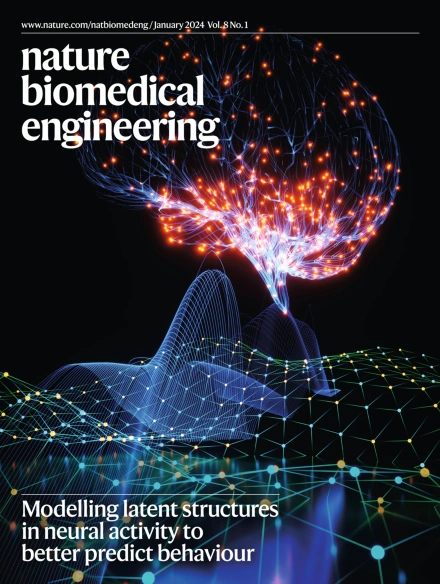Inhibition of LARP4-mediated quiescence exit of naive CD4+ T cells ameliorates autoimmune and allergic diseases.
IF 26.8
1区 医学
Q1 ENGINEERING, BIOMEDICAL
引用次数: 0
Abstract
Naive T cells are maintained under a quiescent state, and their exit from quiescence is a hallmark of antigen stimulation. Here we identify the RNA binding protein La-related protein 4 (LARP4) as an important checkpoint regulator of quiescence exit in naive CD4+ T cells. Conditional knockout of LARP4 in naive CD4+ T cells leads to an enhanced quiescence state and/or dampened quiescence exit due to altered stability of several messenger RNAs important for T-cell activation. The differentiation of naive CD4+ T cells into helper T-cell subsets is also impaired after conditional knockout, leading to ameliorated autoimmune and allergic responses. Lastly, we design a peptide inhibitor of LARP4 (LIPEP), and treatment with LIPEP could perfectly mimic LARP4 deficiency and alleviate the severity of autoimmune and allergic diseases in the corresponding mouse models. Our study reveals a link between RNA stability and CD4+ T-cell homeostasis/adaptive activation, highlighting the potential of LARP4 as a preventative and therapeutic target for autoimmune and allergic diseases although at quite high doses.抑制larp4介导的初始CD4+ T细胞的静止退出可改善自身免疫性和过敏性疾病。
幼稚T细胞维持在静止状态,它们从静止状态中退出是抗原刺激的标志。本研究发现,RNA结合蛋白la相关蛋白4 (LARP4)是初始CD4+ T细胞休眠退出的重要检查点调节因子。在初始CD4+ T细胞中,条件敲除LARP4会导致静止状态增强和/或由于对T细胞活化重要的几种信使rna的稳定性改变而抑制静止退出。在条件敲除后,初始CD4+ T细胞向辅助性T细胞亚群的分化也受到损害,从而导致自身免疫和过敏反应的改善。最后,我们设计了一种LARP4肽抑制剂(LIPEP),在相应的小鼠模型中,用LIPEP治疗可以很好地模拟LARP4缺乏,减轻自身免疫性和过敏性疾病的严重程度。我们的研究揭示了RNA稳定性与CD4+ t细胞稳态/适应性激活之间的联系,强调了LARP4作为自身免疫性和过敏性疾病的预防和治疗靶点的潜力,尽管剂量相当高。
本文章由计算机程序翻译,如有差异,请以英文原文为准。
求助全文
约1分钟内获得全文
求助全文
来源期刊

Nature Biomedical Engineering
Medicine-Medicine (miscellaneous)
CiteScore
45.30
自引率
1.10%
发文量
138
期刊介绍:
Nature Biomedical Engineering is an online-only monthly journal that was launched in January 2017. It aims to publish original research, reviews, and commentary focusing on applied biomedicine and health technology. The journal targets a diverse audience, including life scientists who are involved in developing experimental or computational systems and methods to enhance our understanding of human physiology. It also covers biomedical researchers and engineers who are engaged in designing or optimizing therapies, assays, devices, or procedures for diagnosing or treating diseases. Additionally, clinicians, who make use of research outputs to evaluate patient health or administer therapy in various clinical settings and healthcare contexts, are also part of the target audience.
 求助内容:
求助内容: 应助结果提醒方式:
应助结果提醒方式:


